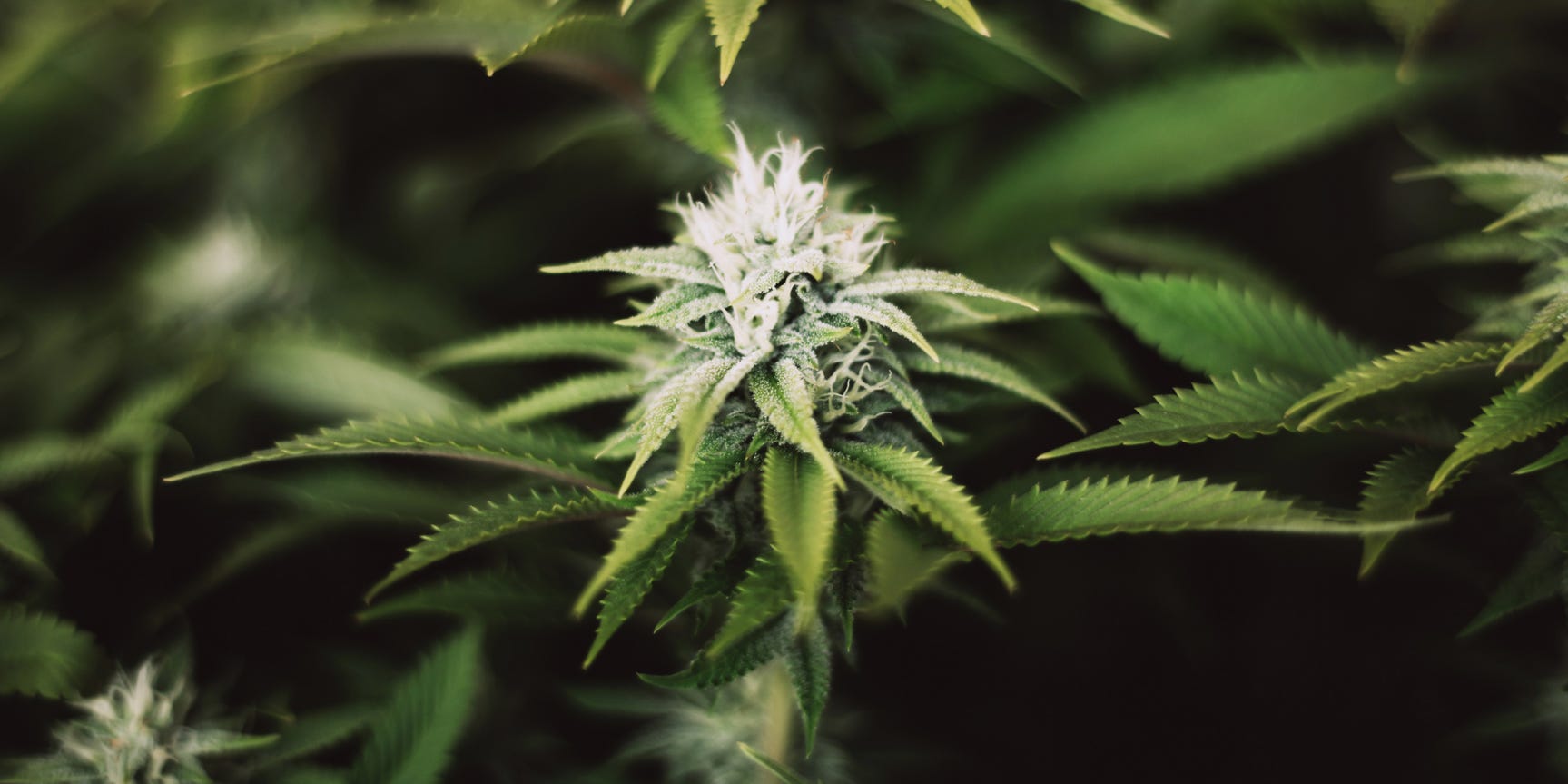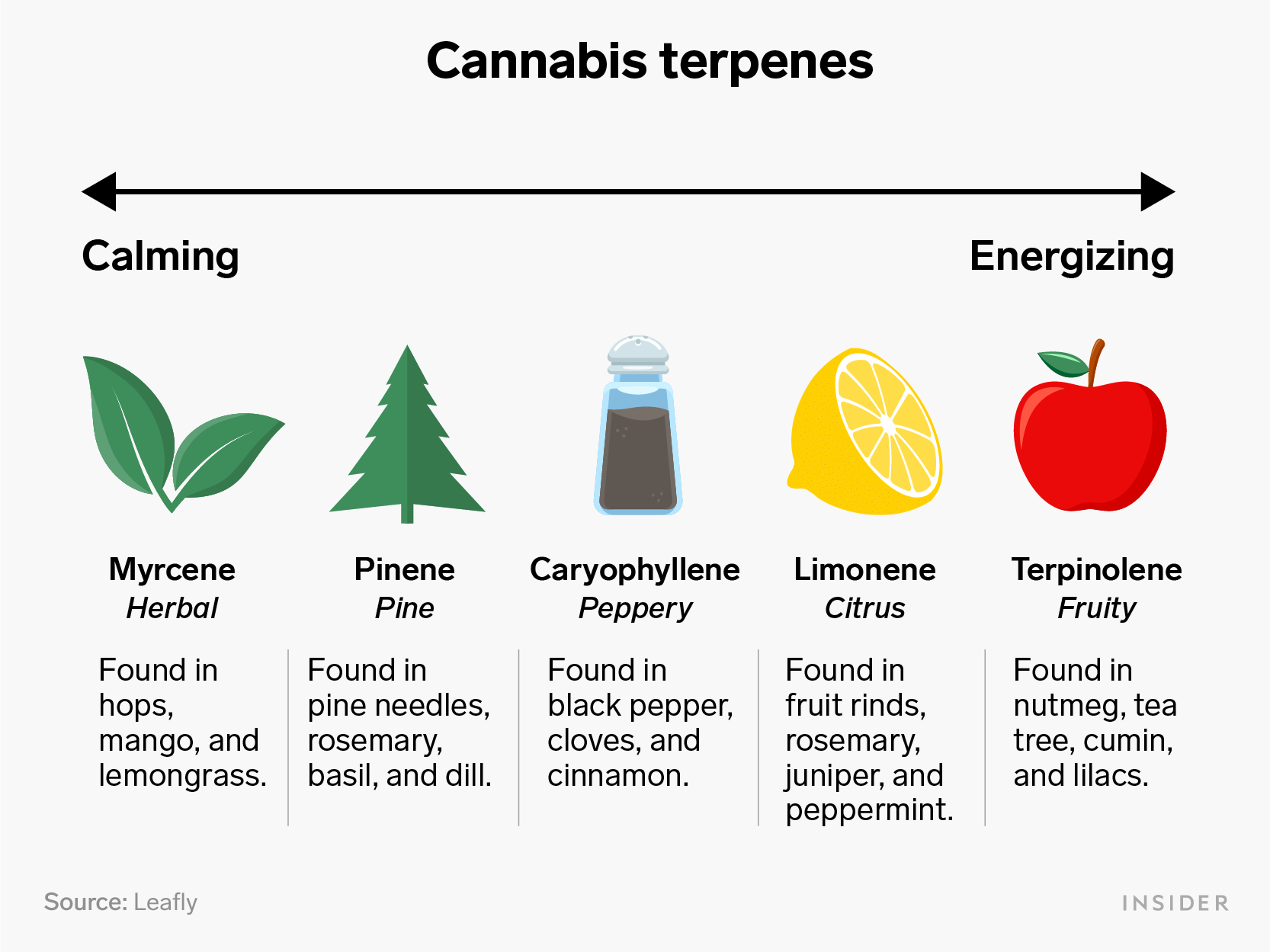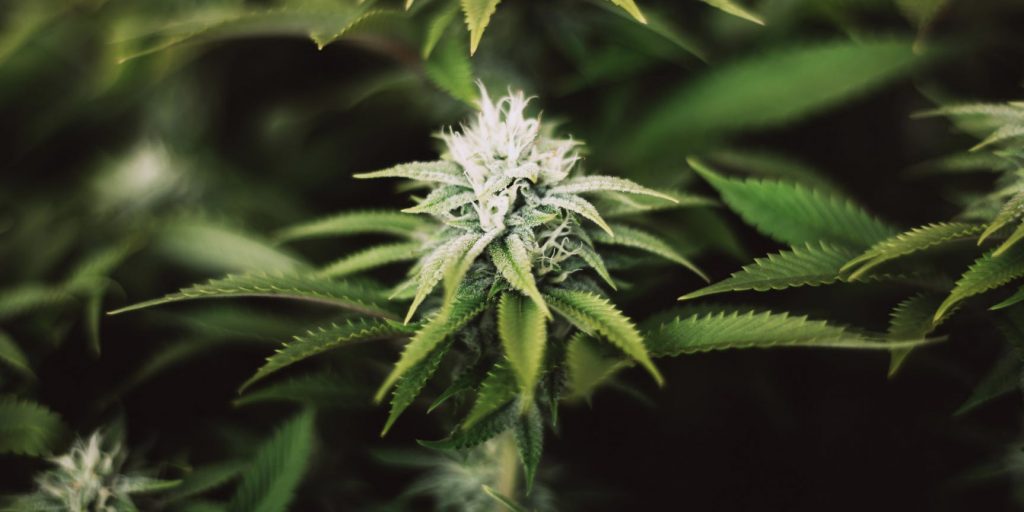
Olena Ruban/Getty Images
- Terpenes are compounds found in plants that give them their distinctive smells.
- Terpenes may influence how cannabis affects the brain, but research is still emerging.
- Common terpenes include pinene, which reduces anxiety, and linalool, which regulates mood and pain.
- Visit Insider's Health Reference library for more advice.
Terpenes are aromatic, naturally occurring compounds found in a variety of plants. They're perhaps most famously found in cannabis and some think may enhance the herb's therapeutic benefits. Here's what you need to know.
What are terpenes?
Terpenes, of which there are thousands of types, are the chemicals behind various plant scents, like the floral aroma of lavender or the spicy scent of black pepper. However, these compounds do more than just smell good – they defend plants against predators and attract pollinators.
"Terpenes are not unique to cannabis, however, cannabis happens to produce hundreds of different terpenes and tends to produce an abundant amount, hence the strong aroma," says Jeff Chen, MD, founder of the UCLA Cannabis Research Initiative.
Different varieties or "strains" of cannabis have different terpene compositions that can alter the herb's smell and subtly change its effects, says Stacia Woodcock, PharmD, clinical cannabis pharmacist, and dispensary manager at Curaleaf.
How do terpenes affect the body?
While terpenes alone can't get you high, researchers believe they can slightly alter the sensations and therapeutic benefits you reap from smoking cannabis.
Much of cannabis's therapeutic properties are due to cannabinoids like CBD and THC. Terpenes on the other hand have a "more subtle, indirect effect on the overall experience of inhaled cannabis," Woodcock says. They are largely responsible for the slight differences in effects between cannabis strains that otherwise are the same cannabinoid composition.
"Different terpenes affect the body differently. Some have a more energetic or uplifting effect and some are more relaxing or sedating," Woodcock says. "Terpenes are also thought to have an additive therapeutic effect of their own, and more research is being done to further understand their potential benefit and use for various symptoms and disease states."
However, some evidence suggests that terpenes do not change how CBD and THC affect the brain.
Common terpenes
Different terpenes are thought to have varying therapeutic properties ranging from anti-inflammatory, anti-anxiety, antioxidant, and antidepressant effects, among others.

Here are some of the most prominent terpenes found in cannabis:
- Myrcene. Myrcene is one of the most abundant terpenes found in cannabis as well as lemongrass, bay leaves, parsley, cardamom, thyme, and basil. Animal studies suggest it has sedative properties, but the evidence is weak and effects were only seen in high doses.
- Caryophyllene. Caryophyllene is responsible for the spicy scent of black pepper. It's also found in cloves, hops, and rosemary. A 2014 animal study found that it has anti-inflammatory and pain-relieving properties in mice, but it's not clear if these findings are applicable to humans.
- Humulene. Humulene is found in cannabis as well as sage and ginseng. Animal studies have found that it has anti-inflammatory properties when used in mice and rats, but it's not clear if these are applicable to humans.
- Alpha-Pinene. Pinene is the most abundant terpene in nature, found in cannabis, pine trees, and Spanish sage. It has anxiety-reducing properties and is able to bind to neurotransmitter sites in the brain in the same way as drugs like Xanax.
- Linalool. Linalool, the primary terpene in lavender, is responsible for the plant's floral scent. Studies in animals and humans suggest that linalool has anxiety-reducing, antidepressant, mood-stabilizing, sedative, pain-relieving, and anti-inflammatory properties.
- Limonene. Limonene is often found in cannabis as well as lemon rind and other citrus fruits. Preclinical studies show that it has anti-cancer, anti-inflammatory, wound-healing, and anti-bacterial effects.
Insider's takeaway
If you're wondering how to distinguish the terpene content of different strains of cannabis, Chen says the only real way is to check the label.
"In terms of cannabis strains, there's no good way to predict what strain has which terpenes because there's no regulation of cannabis strains," Chen says, adding that "a consumer's best bet is to look at the label of cannabis sold in state-regulated dispensaries - most have gone through mandatory state testing and will show the terpene content."
